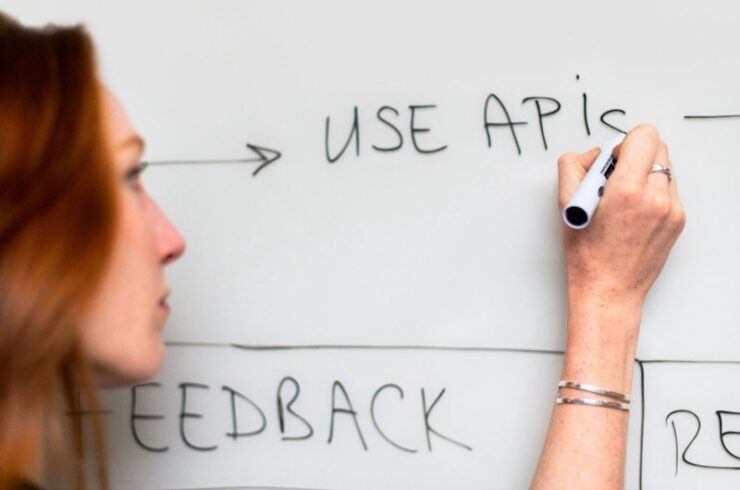In running and managing a business, or organizing projects, it’s easy to get bogged down in details and lose sight of the big picture. Concept mapping can help to solve this problem by providing a visual overview of all the relevant concepts and their relationships.
A concept map is a graphical tool that uses boxes or circles to represent concepts, and lines or arrows to represent relationships between them. The strength of concept mapping is that it allows you to see all the concepts in your business or project and how they are related, helping you to better understand and manage them.
Have you used concept mapping before? If not, this article will provide a basic introduction to the concept and explain how you can start using it in your business or project. Let’s get started!
Concept Mapping, or Mind Mapping?
You may be picturing a concept map as a sprawling brainstorm diagram with lots of arrows and connections, and no real structure — but that is closer to a mind map, which is a little different.
Concept maps are more structured and specific than mind maps, and are designed to show the relationships between concepts rather than just ideas. That’s not to say that concept maps can’t be used for brainstorming — in fact, they’re a great tool for that — but they should be used with care to avoid becoming too messy.
When used well, a concept map can act as an evolving tool that continues to build on ideas and share them between your team. NASA even used a concept map to communicate their exploration ideas and objectives, and they’ve been used for many other major endeavors as well.

The basic structure of a concept map is a tree diagram, with the main concept at the top and subordinate concepts branching out from it. This hierarchical structure makes it easy to see how concepts are related, and to navigate your way through the map.
However, you don’t have to stick to a tree structure — you can also use loops and networks to show more complex relationships. In fact, it’s often helpful to use several structures in the same map to show the different ways that concepts are related.
Types of concept maps
There’s a lot of freedom in how you can create a concept map. This is a good thing, because every business or project is different, and you may need to adapt your conceptual diagram to suit it. Let’s run through some of the most common types of concept maps:
1. The basic flowchart
This is a chart you’ll likely have heard of before, and it’s a great way to start off your concept mapping journey. A flowchart is simply a diagram of the steps involved in a process, with boxes representing each step and arrows linking them together.
Flowcharts are used for things like process improvement and troubleshooting. Because they show the steps in a process, they’re perfect for understanding how things work and where problems might occur, so you can streamline your workflow management moving forward.
2. The system map
System maps are similar to flowcharts, but they focus on relationships between concepts rather than their process or hierarchy. They’re perfect for showing how a system works as a whole, and can be used to model everything from business processes to computer networks.
3. The spider web
If you want to start with one overarching concept and then drill down into more specific concepts, the spider web is a great way to do it. This type of map starts with a central concept and then branches out into subordinate concepts, which in turn branch out into even more specific concepts.
This type of map is perfect for exploring complex topics in depth, and is often used in research and brainstorming.
4. The hierarchy
The hierarchy is the most common type of conceptual diagram, and it’s perfect for showing the relationships between concepts in a clear and concise way. As we mentioned earlier, this type of map uses a tree structure, with the main concept at the top and subordinate concepts branching out from it.

Hierarchies are perfect for illustrating the structure of a business or project, and can be used to show the relationships between different departments, tasks, or stages in a process.
Which map structure is best?
The best map structure depends on the specific business or project you’re working on. However, the hierarchy is usually a good place to start, because it’s easy to understand and can be adapted to suit your needs.
If you need to show more complex relationships, try using different structures in the same map. This can help you to get a better understanding of how everything fits together.
Remember that there’s no cut-and-dry answer to this question — you should experiment with different map structures until you find one that works best for your business or project.
Concept mapping as a business tool
Anyone can use a conceptual diagram; in reality, it is simply a visual way to represent thoughts and ideas. However, for businesses, concept mapping can be a powerful way to improve communication and understanding among team members, and between teams and clients.
Let’s take a look at some of the main uses of concept maps in business:
1. Brainstorming and problem-solving
Concept mapping can be an extremely useful tool for brainstorming and problem-solving. By visually representing ideas, it can be easier to see patterns and connections that might not be apparent when simply thinking about things verbally. This can help to generate more ideas, and to come up with solutions to problems more quickly.
For example: perhaps your business needs a new marketing strategy, but you’re not sure where to start. By creating a conceptual diagram, you can brainstorm all the different aspects of marketing that might be relevant, and then begin to group and connect ideas together.

2. Clarifying and sharing ideas
Concept maps can also be a great way to clarify and share ideas. It’s difficult to get everyone on the same page if your ideas are unclear — but with a concept map, everyone can see the same visual representation of the ideas. This can make it easier to communicate and to get feedback.
Additionally, concept maps can be shared easily with clients or other stakeholders. This can help to ensure that everyone has a common understanding of the project, and can contribute their ideas effectively.
3. Planning and organizing projects
Projects have many components and moving parts, and it can be difficult to keep track of them all. A conceptual diagram can help to organize and plan projects by providing a visual overview of all the different elements involved. This can make it easier to identify potential problems and delays early on, and to make changes if needed.
For instance, you may be working on a new website design project. A concept map could help with this by showing the different stages of the project, and the dependencies between them. You could use a flowchart and start with the initial client meeting, and then show how tasks need to be completed in order for the project to move forward.
4. Tracking progress and results
Tracking progress is one of the most effective ways to identify and resolve bottlenecks in a project. By using conceptual diagrams to track the progress of individual tasks, you can get an overview of how the project is progressing as a whole.
You can also use concept maps to track outcomes — for example, if you’re running a marketing campaign, you could track how many leads were generated as a result.
5. Enhancing creativity and collaboration
Concept maps are a creative outlet for those who have ideas to share. They can also be a great way to inspire collaboration among team members. When everyone can see the same visual representation of the ideas, it’s easier for them to understand and build on each other’s thoughts.
For example, you could create a concept map for a new product idea. By including everyone on the team, you can get feedback and come up with a better idea. Team members can take ownership of different parts of the project, which can help to improve motivation and productivity.

Concept maps are one of the simplest and most effective ways to elevate your business understanding. By using concept maps to clarify and share ideas, plan and organize projects, track progress and results, and enhance creativity and collaboration, you can make your business run smoother and be more effective overall.
Concept maps: pitfalls to avoid
As previously mentioned, concept maps are different to mind maps in that they are more structured and hierarchical. The main pitfall to avoid is that of creating a map which is too complex or detailed. This will not be helpful in understanding the business and may even confuse matters further.
When creating a concept map, it is important to keep the following in mind:
- The aim of the map is to help with understanding, so keep it simple
- Use clear and concise language
- Use visual aids to help make the map easier to follow
- Stick to one topic per map
- Use connecting lines to show relationships between concepts
Concept maps can be a very useful tool for business understanding. By keeping the above points in mind, you can create maps which are both informative and easy to follow.
Final thoughts on concept mapping
If you’ve been feeling disorganized lately, or your business projects are falling into disarray, it may be time to start using concept maps. Remember that a good concept map is not a one-time activity — it’s a living, breathing document that you’ll want to revisit often. The more you use it, the better you’ll understand your own business and how to make it thrive.
